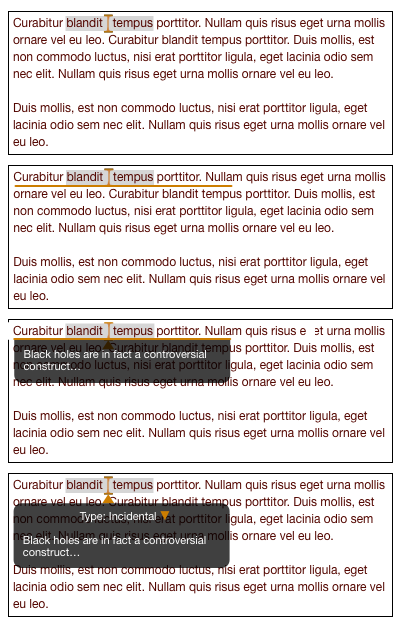We are starting with these types:
- Incidental. This is the most common type, being additional thoughts from the author not essential to the main thread. For the example here, I'll just reuse the previousone.
- Bibliographic. We currently expect this to be a standardcitation that possibly could lead to some online display of original sources (assuming rights permit).
- Annotation. In our GeoKabbalitter section, we plan to put well known text with extensive annotations. Ideally, these annotations should be able to be collectively turned inside out: the main flow being theannotations and the source text being in the parentheticals.
- External. We expect this to be much like an incidental type but with ideas that have been expressedelsewhere on line.
- Code. There will be some cases where the reference is to programming code. In thisexample, we'll try Trebuchet, which is supposed to be web safe.
- Math. In a situation similar to the code type, we may want to reveal some mathematical concept or expression that is behind the annotated content. The example in this case uses some MathML pasted from Wikipedia. This will seem jibberish at first because we'll have to install MathJax. The examplehere has common equations but we'll be working with custom glyphs and some invented notation, designed to be more accessible.
- Ontology Graph. There will be some cases where the reference is to the underlying ontology and I will want to display the ontology graph. In the thisexample short term, we can simply handle this with ordinary text with a normal image macro and the example is simply this. In the longer term will want to have that colorbox macro open an iframe with live graph info, computed somehow.
Very likely, some code, graph and math types will be siblings somehow.


